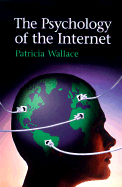Book contents
- Frontmatter
- Contents
- PREFACE TO THE PAPERBACK EDITION
- 1 THE INTERNET IN A PSYCHOLOGICAL CONTEXT
- 2 YOUR ONLINE PERSONA: THE PSYCHOLOGY OF IMPRESSION FORMATION
- 3 ONLINE MASKS AND MASQUERADES
- 4 GROUP DYNAMICS IN CYBERSPACE
- 5 INTERGROUP CONFLICT AND COOPERATION
- 6 FLAMING AND FIGHTING: THE PSYCHOLOGY OF AGGRESSION ON THE NET
- 7 LIKING AND LOVING ON THE NET: THE PSYCHOLOGY OF INTERPERSONAL ATTRACTION
- 8 PSYCHOLOGICAL ASPECTS OF INTERNET PORNOGRAPHY
- 9 THE INTERNET AS A TIME SINK
- 10 ALTRUISM ON THE NET: THE PSYCHOLOGY OF HELPING
- 11 GENDER ISSUES ON THE NET
- 12 NURTURING LIFE ON THE INTERNET
- Index
PREFACE TO THE PAPERBACK EDITION
Published online by Cambridge University Press: 05 August 2012
- Frontmatter
- Contents
- PREFACE TO THE PAPERBACK EDITION
- 1 THE INTERNET IN A PSYCHOLOGICAL CONTEXT
- 2 YOUR ONLINE PERSONA: THE PSYCHOLOGY OF IMPRESSION FORMATION
- 3 ONLINE MASKS AND MASQUERADES
- 4 GROUP DYNAMICS IN CYBERSPACE
- 5 INTERGROUP CONFLICT AND COOPERATION
- 6 FLAMING AND FIGHTING: THE PSYCHOLOGY OF AGGRESSION ON THE NET
- 7 LIKING AND LOVING ON THE NET: THE PSYCHOLOGY OF INTERPERSONAL ATTRACTION
- 8 PSYCHOLOGICAL ASPECTS OF INTERNET PORNOGRAPHY
- 9 THE INTERNET AS A TIME SINK
- 10 ALTRUISM ON THE NET: THE PSYCHOLOGY OF HELPING
- 11 GENDER ISSUES ON THE NET
- 12 NURTURING LIFE ON THE INTERNET
- Index
Summary
“WHAT HATH GOD WROUGHT” were the words transmitted in 1844 to officially inaugurate the telegraph line running from the Supreme Court chamber in Washington to a platform 15 miles outside of Baltimore. Today's Internet generates some of the same debates that the “Victorian Internet” did more than a century and a half ago, in which the promise and perils of an astonishingly capable network are linked to the ways in which we behave when we use it. The goal of telegraph inventors was to transmit intelligence instantaneously across any distance, but for better or worse, the technology quickly became involved in all kinds of human activities, from clandestine romances to stock manipulation schemes. So it is with the Internet.
This book, The Psychology of the Internet, examines how we behave when we act and interact online, and why the characteristics of the medium can affect our behavior in surprising and sometimes troubling ways. After the first publication in 1999, the Y2K doomsayers were proven wrong, and for the most part, the world's computer infrastructure survived the transition easily. Technically, the Internet had very little trouble with the cutover, but much has happened recently that highlights the growing importance of the psychological aspects of this Internet environment.
The explosive growth in the number of people online continued, and by mid-2000 estimates topped 350 million. The breathtaking growth was not only in the number of users, however.
- Type
- Chapter
- Information
- The Psychology of the Internet , pp. xiii - xxxPublisher: Cambridge University PressPrint publication year: 1999



